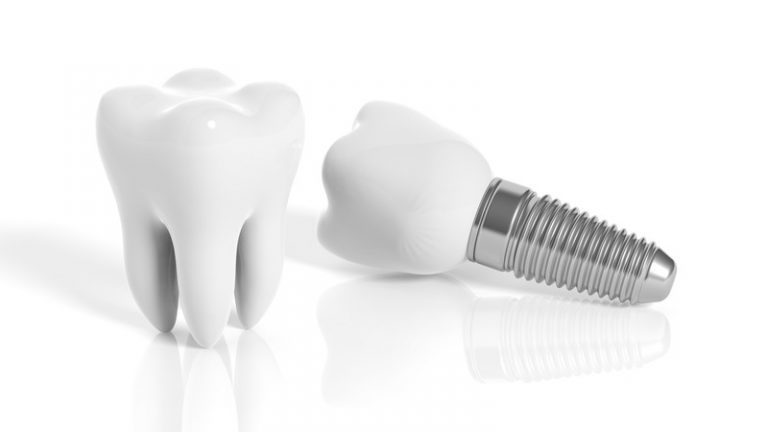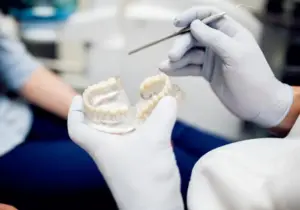Patients sometimes wonder if ceramic dental implants are better for their health compared to titanium dental implants.
Most dental implants placed are made of titanium and have a silver color. The white implants are made of zirconium, but are marketed as a nonmetal implant. Interestingly, both titanium and zirconium are transitional metals in the same group.
The primary rationale for using a zirconium implant would be if a patient has a titanium allergy, which is rare. Both titanium and zirconium implants have demonstrated similar bone-to-implant contact.
Zirconium implants, however, have a few drawbacks compared to titanium implants:
- Zirconium implants are one-piece, have anatomic limitations, and can develop microfractures when the implant is adjusted to prepare the implant for the crown.
- Zirconium implants are usually not able to be placed under the gums due to the one-piece design.
- Small diameter zirconium implants have a higher risk of fracture.
- The crowns for zirconium implants must be cemented.
Alternatively, titanium implants afford the possibility of a cemented crown or a screw-retained crown. The screw-retained crown eliminates the risk of cement irritating the gums and bone.
The fields of dental implants and computer assisted and guided surgery are constantly improving. It is exciting to see how both will continue to evolve over the next five to ten years. Who knows, possibly we will be able to regrow your teeth in a lab from stem cells harvested from your blood, and reduce the titanium vs zirconium argument to the history books.









